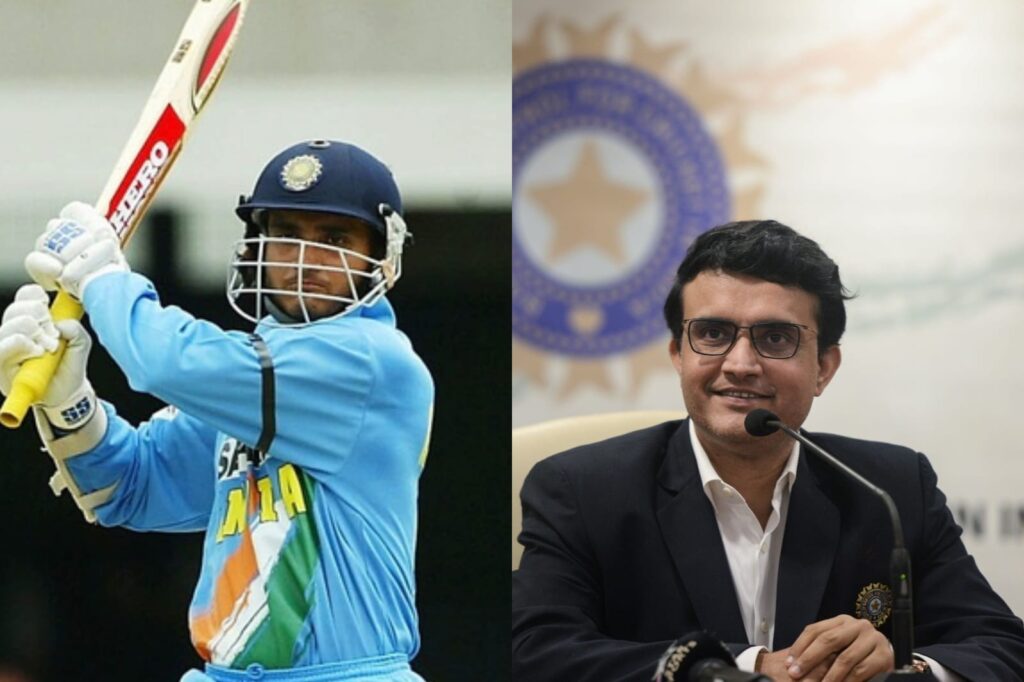It is not the easiest of things to get dispassionate when writing about Sourav Ganguly. It would be the easiest to recall images of Sourav Ganguly, rising from his seat in the Lord’s balcony and waving his shirt to celebrate victory in the NatWest Trophy final against England. Or his strained relationship with coach Greg Chappell in 2005-06.
But then there is so much more to Sourav Ganguly and his dramatic stint in India colours.
I remember a colleague asking him if the first ball duck in his final innings in the 2008 Test against Australia in Nagpur was dramatic. “I was not too disappointed with the first-ball duck but was disappointed with the 85 I got. I was so close to getting a hundred. I don’t know whether (that) one duck made my career dramatic. It was dramatic in any case,” he said.
Indeed, his entry to the Test side in 1996 was rather dramatic.
Picked along with Rahul Dravid as the back-up batters to the middle-order that included Sanjay Manjrekar, Sachin Tendulkar and skipper Mohammed Azharuddin, few expected that either youngster would get to make his Test debut. Navjot Sidhu had quit the tour in a huff and Sanjay Manjrekar had injured a toe in the big defeat in Edgbaston. A loss to Derbyshire followed.
He arrived with a century each in his first two Tests at Lord’s and Trent Bridge in Nottingham. I remember walking around the Lord’s periphery from the (old) Press Box to the players’ entrance to meet him and apologise for having written of him as a quota candidate in the squad. He made it possible to overcome any uneasiness that could have clouded our professional relationship.
Quite soon, he was making himself an indispensable part of the team in both formats of the game, even opening the innings with Sachin Tendulkar in one-day internationals. But the word dramatic was not going away from him in a hurry. For, his elevation as India captain came in stunning circumstances.
The team was in a shambles when the selectors were forced to look for a skipper. Indian cricket had been ravaged by the match-fixing scandal and Sachin Tendulkar had decided to relinquish captaincy and no force on earth could bring him to change his mind. And purely from a cricketing viewpoint, India was seen as a soft team away from the sub-continent.
He will always be remembered as the man at the helm who steered the team away from choppy waters. Blessed with team-mates like Sachin Tendulkar, Rahul Dravid, Anil Kumble, Harbhajan Singh, Virender Sehwag, VVS Laxman, Javagal Srinath and Zaheer Khan, to name a few – he was able to change the approach.
It is this ‘Dada’ legacy of his that will endear Sourav Ganguly to everyone.
I will always see his hundred at the Gabba in Brisbane in the opening Test of the 2003-04 tour of Australia as a powerful statement of intent, as the cornerstone around which the India’s reputation started evolving as an intensely competitive Test outfit in all conditions. The knock will always be cited among the best illustrations of leading by example.
Curiously, a little over a year later, he found himself being relieved of his captaincy – ostensibly to help him rediscover his mojo as a batter – and being dropped from the Test side against Sri Lanka. The former captain had played critical knocks of 40 and 39 in the second Test in Delhi, sharing important partnerships with Sachin Tendulkar in the first innings and Yuvraj Singh in the second.
The selectors’ decision came across as poorly timed and was neither thought through nor explained well. And of course, the words maturity and grace did not occur to many decision makers. Be that as it may, Kolkata burned in anger, former cricketers across the country were aghast, the then Board President Sharad Pawar was shocked and even the Lok Sabha ended up discussing the issue.
We were subsequently told that there was the danger of Sourav Ganguly’s lack of motivation rubbing off on the others in the team. But we could see him make sincere efforts to involve himself as an integral part of the team. When faced with the worst crisis in his career – the sack from the one-day side after he had clocked more than 10,000 runs for India – he went back to domestic cricket and scored runs and took wickets to show that the fire continued to rage in his belly.
The chapter featuring coach Greg Chappell is too well known to recount here in greater detail but it should suffice to say that he showed character and resolve to bounce back to play one-day internationals till November 2007 and Tests for a year longer.
He gracefully accepted a senior statesman’s role in the squad, lending his shoulder to the team’s wheel. He left his fans with a well-crafted hundred against Australia in Mohali in his penultimate Test and a splendid knock of 85 in the final Test in Nagpur. And he left with no regrets
He became Cricket Association of Bengal President in 2015 and Board of Control for Cricket in Indian President in 2019 in challenging situations. He was given the CAB reins in the wake of Jagmohan Dalmiya’s passing and elected BCCI chief after the Lodha Committee reforms, endorsed by the Supreme Court, rocked BCCI.
For all that, it his contribution as a cricketer and a transformational captain will be cherished as the more dramatic.




